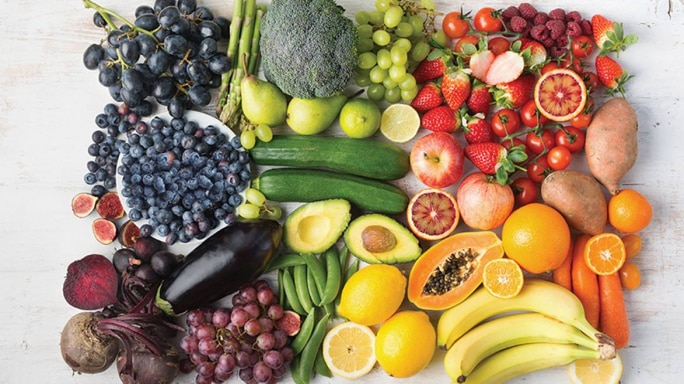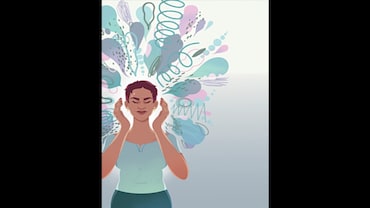- HOME
- /
- Better Living
- /
- Food
- /
Colourful Foods for a Healthier You
Five colours for a healthier, more vibrant you

From bread to chips to crisps, have you ever noticed that the majority of processed foods are beige or brown? Many whole and natural foods, on the other hand, are brightly coloured---and eating them can help you feel vibrant. Here’s why:
Red helps your heart.
Studies show that lycopene, a red-coloured phytonutrient found in tomatoes, can help reduce the risk of heart attack due to its potent antioxidant activity. What’s more, fresh tomatoes and tomato extracts have been shown to lower LDL cholesterol---the ‘bad’ kind that can lead to clogged-up arteries. Virgin Mary, anyone?
Orange maintains your immune system.
Carrots’ bright colour comes from beta-carotenes---compounds that are converted into vitamin A in your body. Vitamin A, in turn, plays a pivotal role in the healthy functioning of your immune system, helping you to fight everything from the common cold to cancer.
Yellow supports your eyes.
The humble corn-on-the-cob has a compound called lutein, which is also found in your eye’s retina. A report in the British Journal of Ophthalmology suggested that eating lots of yellow-coloured foods can support the functioning of your eyes, thus reducing your risk of conditions such as age-related macular degeneration.
Blue protects your brain.
Pterostilbene is a phytonutrient that’s found in the skins of blueberries and dark grapes. Recent animal studies have shown that supplementation with pterostilbene can improve cognition, reduce anxiety and enhance mood. Try adding a cup of blueberries to your morning muesli, or throw together a fruit salad with purple grapes.
Green assists your liver.
Cabbage, kale and broccoli are all full of glucosinolates---compounds that support your liver’s ability to eliminate toxins. Aim to eat two large handfuls of these vegetables daily. There’s no need for soggy veggies though, as steaming them is the best way to preserve their health-boosting properties.
What about white foods?
When nutritionists warn against white foods they typically mean refined sugar, rice, flour, pasta and other processed foods such as white bread, crackers and cereals. The main problem with these foods is the degree of processing, which strips away most of their nutritional content, and their lack of fibre. They are usually full of empty calories that make you feel full but add close to zero nutritional content.
However, all white foods are not necessarily bad for you. Quinoa, oats and potatoes for instance, are all good sources of fibre, as well as vital vitamins and minerals. Cauliflower is one of the richest sources of Vitamin K. Garlic, another white consumable, contains organo-sulphur and flavonoids---compounds that boost immunity, lower blood pressure and cholesterol levels and protect against cancer. Other healthy white foods include radishes, pine nuts, white beans, onions, turnips and mushrooms.
More Foods For Your Rainbow Diet
Red: Watermelon, cherries, pink grapefruit, pink guava, chilli pepper, apple, strawberries, red bell pepper, pomegranate, red spinach
Orange: Mango, papaya, apricots, pumpkin, wild salmon, turmeric, sweet potato, peach, citrus fruits such as mandarin, satsuma, nectarine
Yellow: Egg yolk, saffron, ginger, musk melon, pineapple, passion fruit, yellow pepper
Green: Squash, asparagus, avocado, rocket leaves, spinach, lettuce, broccoli, green beans, peas, green pepper, spring onions, parsley, coriander and mustard leaves, green apple, kiwi fruit
Blue and purple: Jamuns, figs, prunes, raisins, red cabbage, aubergine, beetroot, purple grapes






